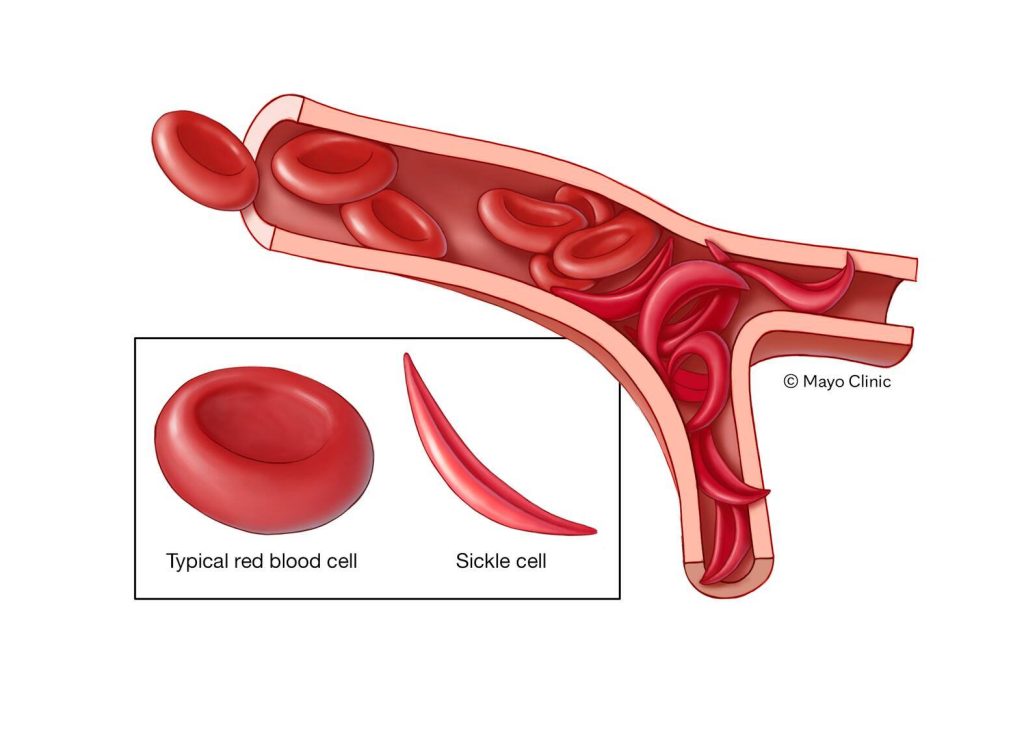Sickle cell disease explained
Approximately 250 million people worldwide carry the gene for sickle cell disease. It affects those with roots in Africa, Spanish-speaking regions in the Western Hemisphere, Saudi Arabia, India and Mediterranean countries. In the U.S., sickle cell disease is most common in the African American community.
Dr. Asmaa Ferdjallah (ESS-mah fer-JALL-ah) a pediatric hematology, oncology and bone marrow transplant physician, is the medical director of Mayo Clinic Children's Center's Comprehensive Pediatric Sickle Cell Program. She says the red blood cell disorder is a lifelong condition with unique challenges.
Genetics
"Sickle cell disease is a genetic, inherited disorder. It's caused by a mutation in the gene that encodes for hemoglobin," says Dr. Ferdjallah.
For a baby to be born with the disease, both parents must carry a sickle cell gene.
The normally flexible red blood cells turn into rigid crescent shapes — sickle cells— that get stuck in blood vessels. And that can cause problems down the line.
 Medical illustration of a typical red blood cell next to a sickle cell
Medical illustration of a typical red blood cell next to a sickle cellScreening
"Fortunately, in the United States, every baby, as part of their newborn screen, is screened for sickle cell disease," says Dr. Ferdjallah.
Babies may not show symptoms until 5 or 6 months, with pain or swelling in the fingertips. And then, later in life, Dr. Ferdjallah says patients experience, "Pain in the extremities, in the back. It's all caused by those sickle cells being stuck in the blood vessels."
Risks
Along with pain, the risks for heart and kidney damage and stroke are increased.
"Some of our patients actually experienced stroke, or what we call silent strokes, from the sickle cells actually getting stuck and creating a blockage in the cerebral vessels," Dr. Ferdjallah says.
That's why it's important to work with patients early on and regularly.
"The earlier you go to curative therapy, the better," says Dr. Ferdjallah.
Read more about Dr. Ferdjallah's work with the Mayo Clinic multidisciplinary sickle cell program.
Interested in more newsfeed posts like this? Go to the Health Equity Research blog.
 Connect
Connect
 Connect
Connect